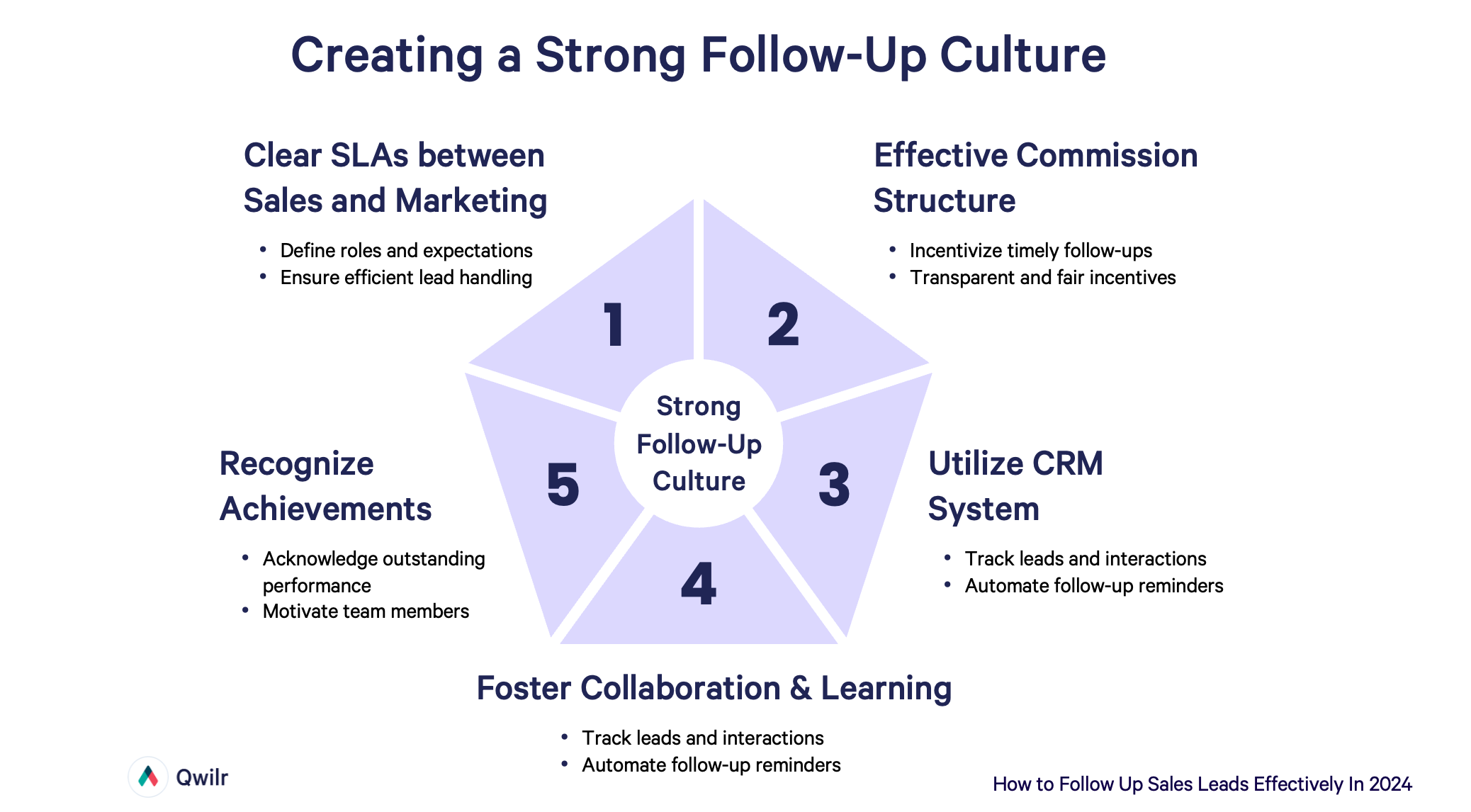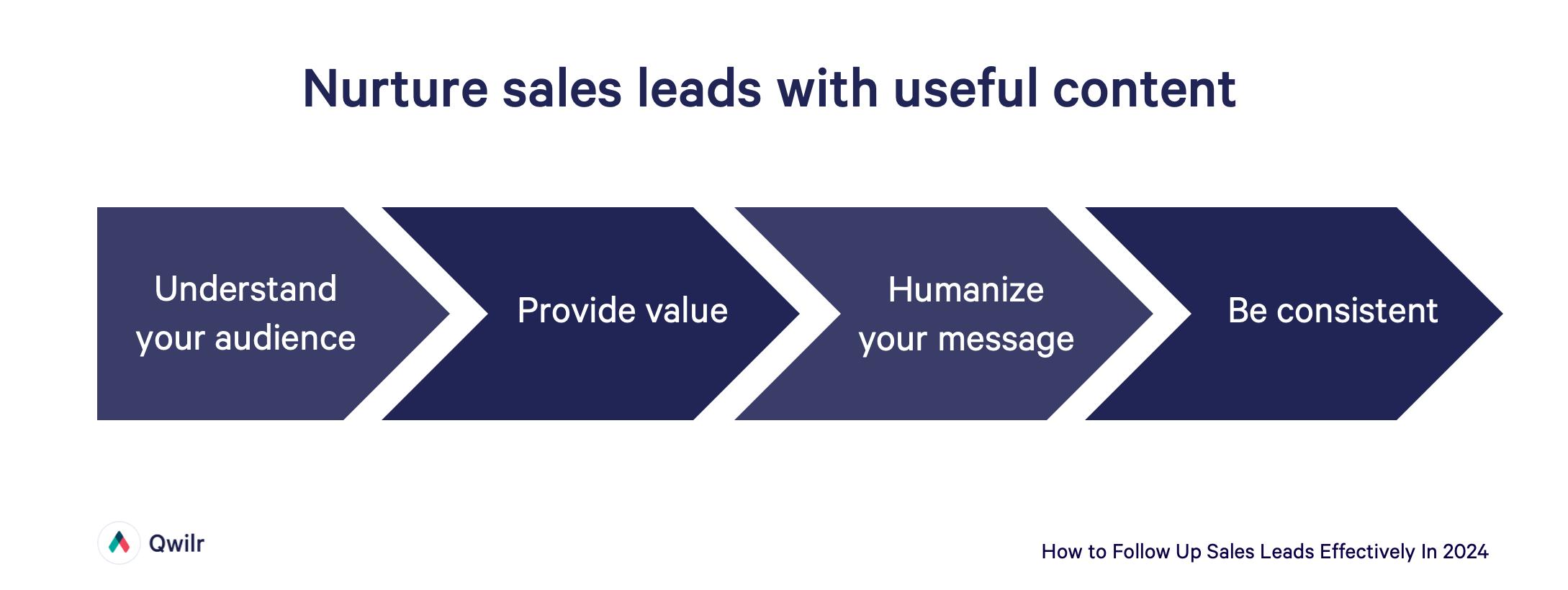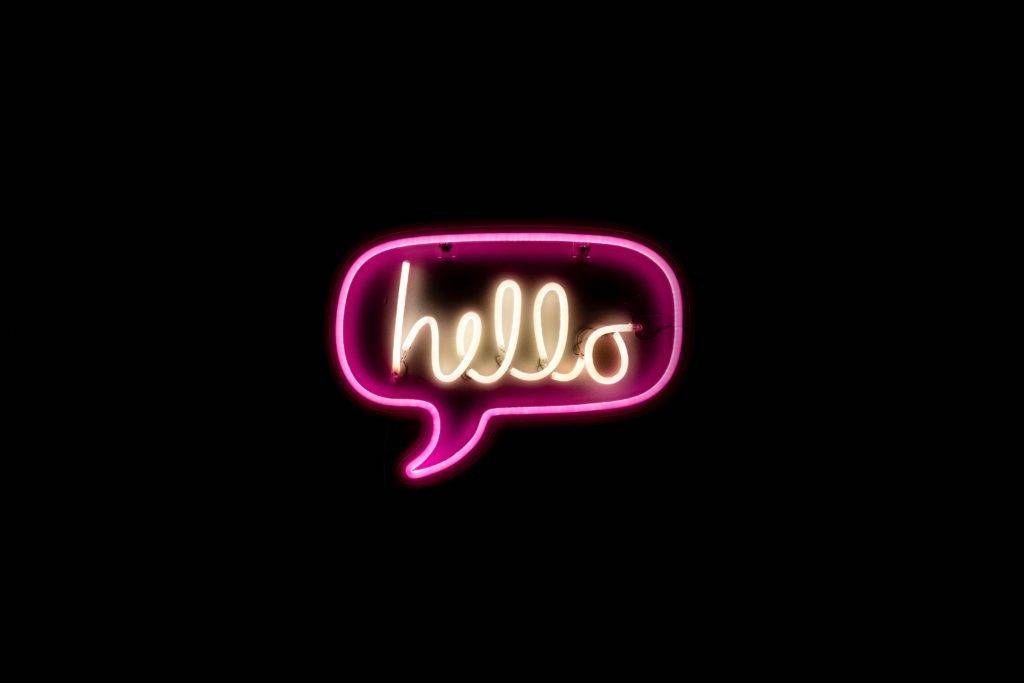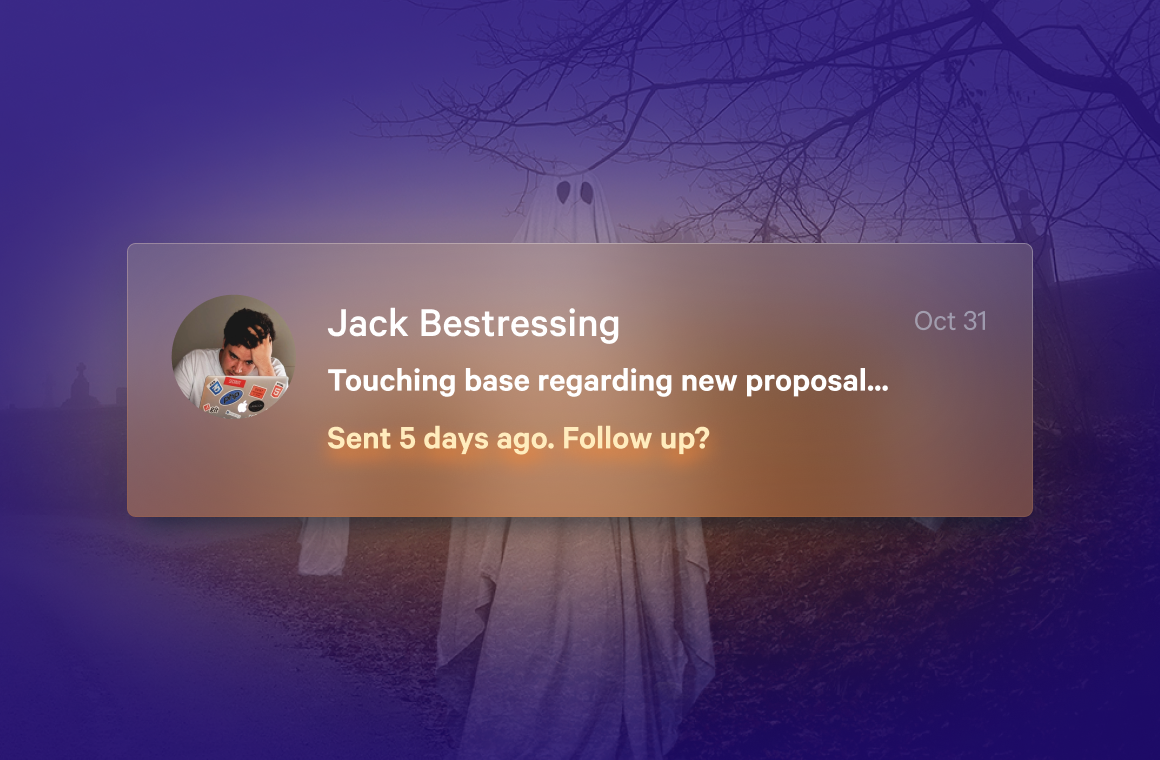Mastering the art of follow up with sales leads can make the difference between success and failure. A degree of pushiness is often necessary, but how can salespeople avoid straying into the ‘annoying’ category, and risk alienating prospective clients?
The key is a balance between persistence and providing value.
In this article, we will explore tried and tested techniques that ensure your follow-ups are both effective and tailored to your prospects' needs.
Consistent. Persistent. But always justifying your place at the table.
You'll learn to gauge buyer interest, communicate effectively, and ultimately close the deal.
Before we dive into those actionable tips, let's first establish exactly why this follow-up process is so important.
Why following up with leads is crucial
Following up with sales leads is an essential part of the sales process, but it’s an aspect most companies don't do it well. A survey analyzing the response rate to demos requested from 100 SaaS companies found a staggering 35% didn’t even reply (with another 5% waiting over six days).
Yep, almost 40% of high-intent leads just left blowing in the wind. Incredible! (and not in a good way).
When you properly follow up with potential customers, you greatly increase your chances of converting them into paying customers. An effective lead follow-up strategy is crucial because it allows you to:
- Build relationships with potential customers by demonstrating your interest in their needs and willingness to help.
- Establish trust by providing valuable information, answering questions, and addressing concerns during interactions.
- Take a temperature check for any buying signals.
- Stay top-of-mind with your prospects as they make their way through the decision-making process.
- Differentiate yourself from your competitors, who may not be as proactive, consistent, or genuinely helpful.
Consider these benefits, all of which can be obtained by following up with leads the right way:
- Improved conversion rates: When you establish trust and show genuine interest in your leads, you're more likely to close deals.
- Increased average deal size: With effective follow-ups, you can identify and address objections, positioning yourself to upsell or cross-sell your products or services.
- Higher customer lifetime value: When you nurture relationships with leads, they're more likely to become loyal customers who continue to do business with you and refer others.
So, as you can see, developing and implementing an effective lead follow-up strategy is essential for your success. Remember that while it may take some time and effort, the ROI more than justifies it.
Make the most of your leads by following up consistently, genuinely, and efficiently, and watch your sales numbers grow.
Need help with follow up? Check out our demo follow-up templates that take some of that heavy lifting off your hands.
Setting an effective culture for lead follow up
To set an effective culture for lead follow-up, you need internal alignment and clear expectations.
Here are a few steps to create a strong follow-up culture within your organization.
1) Establish clear Service Level Agreements (SLAs) between your sales and marketing teams. An SLA is a contract outlining the expectations and responsibilities of both teams regarding lead generation and follow-up.
By clearly defining roles and expectations, you'll ensure that your sales team can efficiently follow up with leads and that the marketing team continues providing qualified prospects.
2) Create an effective commission structure that rewards timely lead follow-ups.
“Show me the incentive, and I’ll show you the outcome”
- Charlie Munger, vice-chairman of Berkshire Hathaway.
By incentivizing your sales team to follow up with leads quickly, you encourage them to prioritize this task. Make sure that your commission structure is transparent, fair, and easy to understand so your sales team has a clear goal to work towards.
3) Utilize a Customer Relationship Management (CRM) system to keep track of leads and their interactions with your sales team- all sales calls, meetings, email follow-up, etc. A CRM can help you automate follow-up reminders and ensure that leads don't fall through the cracks. Additionally, by tracking your outreach efforts and lead interactions, your sales team can glean valuable insights into their needs and preferences, making it easier to tailor their approach and close deals.
4) Encourage a culture of collaboration and continuous learning among your sales team. Hold regular meetings to review lead follow-up performance and discuss strategies to improve the process. Provide your team with resources, such as articles or workshops, to help them develop their sales skills and keep them informed about industry trends.
5) Recognize and celebrate the achievements of your sales team members who excel at lead follow-up. By acknowledging their hard work and dedication, you foster a sense of pride and camaraderie among your team, motivating them to continue with their efforts.

By implementing these strategies, you'll cultivate an effective culture for lead follow-up, increase your sales team's performance, and ultimately drive more revenue for your organization.
Principles for effective lead follow up
Following up with sales leads is essential to turn potential customers into loyal clients. To be effective in this process, consider these key principles:
Be persistent
Don't give up too quickly if you don't receive a response from a lead. It may take multiple attempts to grab your prospect’s attention. It's important to create a follow-up schedule to stay organized and give yourself the best chances of reaching decision makers.
Our follow-up templates help you save time while maintaining the required consistency. Lean on sales automation to keep things structured while significantly lightening your load.
By being persistent in a respectful and strategic way, you can increase your chances of engaging with your leads and ultimately closing deals. Remember, right from the first follow-up, to prioritize providing genuine value, taking care to tailor your approach to their needs and preferences.
Make your offer enticing
To capture your lead's interest in the first place, you need to ensure that your offer is valuable and relevant to their needs. An enticing offer should solve a problem or provide a unique opportunity they can't easily find elsewhere. Highlight the benefits and clearly outline what you're offering so that the lead understands why they should choose your product or service. Sales 101, yes, but well worth repeating.
You must position yourself as a solution to their problem, not just a product or service.
Are you going to increase their efficiency? Boost their productivity? Give them more time to spend with their family or on the golf course?
Make your offer clear and easy to understand.
Capture their interest, then motivate them to take action. Our online proposal software can smooth and speed up the process.
Personalize your communication
Early in the sales process, it's important to tailor your follow-up messages to what you know to be true about your buyer, based on their role, responsibilities and background.
However, as you make your way through the deal process, it's important that follow up reiterates what you've heard first hand from your buyer.
For example, Anthony Natoli, Sales Development Manager at QA Wolf recommends the following template for post-discovery calls or post-cold calls. Natoli's approach is a great way to frame up pain-points and ultimately chart an effective path forward:
This approach demonstrates that you're mutually invested in helping them resolve their identified business problem. Ultimately it's about your buyer not being another CRM value or spreadsheet number. Reference previous meaningful interactions. Little comments showing you paid attention - and valued their time - can go a long way.
This helps build rapport and improve the chances of your offer resonating with them and differentiating you from other businesses vying for their attention and business.
Use various communication channels
Reach out to your leads through different channels such as email, phone calls, and social media. Expanding your presence across multiple platforms, like LinkedIn and Twitter, can increase the likelihood of your leads engaging with you. Alternate between these channels based on your lead's preferences and activity level on each platform. Meet them where they are or where is most convenient for them.
Take time to understand which channels they prefer, and be prepared to alternate between channels if necessary. This is another place where automation tools can be your friend!
Nurture sales leads with useful content
Offer your leads valuable and informative content to establish yourself as an expert in your field. The more knowledge and insight you can provide, the more trust and credibility you earn from your audience. Kellogg School of Management emphasizes the importance of humanizing your message and responding to the experiences of your audience to keep them engaged.
Here are a few useful tips for nurturing your leads with useful content:
1. Understand your audience: Before creating content, take the time to understand your audience's needs and challenges. This allows you to create content tailored to their specific interests and positions you as a valuable resource.
2. Provide value: Your content should provide value and insight to your audience. This could be anything from a blog post or white paper to a webinar or podcast. By providing valuable content in your email marketing and follow ups, you're demonstrating your expertise and building trust with your audience.
3. Humanize your message: To keep your audience engaged, it's important to humanize your message and respond to their experiences. This could involve sharing personal stories or anecdotes related to your content or responding to comments and feedback from your audience.
4. Be consistent: Consistency is key in nurturing your leads with content. You want to create a cadence that's predictable and reliable so that your audience knows when to expect new content. This helps build trust and credibility over time.

By nurturing your leads with useful content, you're establishing yourself as a valuable resource and building trust and credibility with your audience. When they find themselves further down the sales funnel and ready to purchase, you’ll be positioned as the natural choice.
Be flexible
Recognize that not every lead's needs and challenges are the same. Be prepared to adjust your approach and adapt your sales pitch to align with their unique requirements and preferences.
Flexibility helps you maintain a genuine connection with your leads and enhance your chances of converting them into customers. So listen to them. Proper active listening helps you understand their specific needs and challenges. You can then bring certain features to the foreground and adapt the tone and style of how you deliver your communication.
Maybe you’ll discover that while the first option you proposed isn’t really for them, you have other products or services that are.
But you’ll never know if you don’t ask and don’t really listen.
Leveraging engagement signals for effective follow-up
Knowing when and how to follow up with your leads can significantly impact the success of your sales efforts.
Watch the video below to discover a key principle in lead follow-up: using engagement signals to guide your outreach.
Final Thoughts
Mastering the art of following up with sales leads is crucial for any sales professional's success. By balancing persistence and providing value, you can establish trust, build relationships, and differentiate yourself from competitors.
To set an effective culture for lead follow-up, companies need internal alignment, clear expectations, and a focus on collaboration and learning. Principles for effective lead follow-up include being persistent, making your offer enticing, personalizing your communication, using various communication channels, nurturing leads with useful content, and being flexible. By following these strategies and principles, sales professionals can turn potential customers into loyal clients and drive more revenue for their organizations.
Want to save time and ensure consistent brand messaging? Check out our sales follow-up templates.
You can put all that time saved towards building that customer engagement. Or spend more time with the family or on the golf course. Your call!
About the author

Marissa Taffer|Founder & President of M. Taffer Consulting
Marissa Taffer is the Founder & President of M. Taffer Consulting. She brings over 15 years of sales and marketing experience across various industries to a broad range of clients.
FAQs
The most effective way to follow up with sales leads is to be deliberate and offer value. Persistence is key, so continue following up until you get a clear answer. Keep in mind the importance of gaining deeper insight into your buyer's interest to tailor your follow-ups accordingly.
To follow up with warm leads, focus on building trust and rapport. Provide more information about your product, share success stories, or offer helpful resources. In your conversations, aim to uncover their specific needs and concerns to address them directly, ultimately leading them toward making a decision.
The time to wait before following up with sales leads depends on their level of engagement and the nature of your business. As a general rule of thumb, it's a good idea for your sales reps to follow up within 24 hours of the initial contact. This ensures that your communication is fresh in their mind. However, be mindful of their communication preferences and adjust the timing accordingly.


